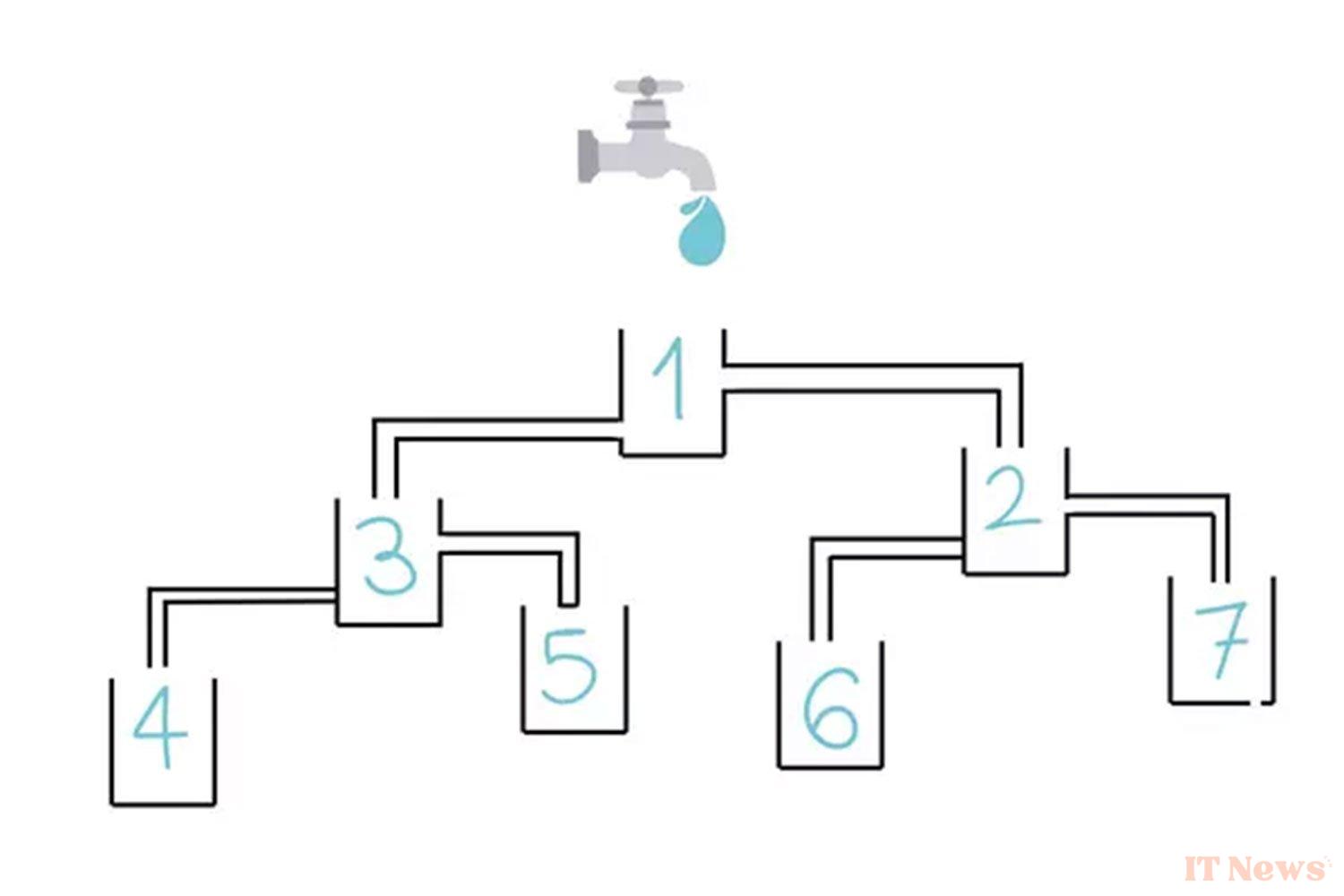This painting is not simply an abstract work of art, but the setting for a puzzle that will test your insight and observation skills. The image before you depicts a challenge that seems simple on the surface: seven glasses, numbered 1 to 7, connected by a network of conduits through which liquid can flow. The starting point is glass number 1, into which a continuous stream of water is ready to be poured. The question posed to you is: Which of these glasses will be the first to fill?
At first glance, you might think the answer lies simply in gravity. Water should naturally flow to the lowest points. But make no mistake, the puzzle requires much more than an understanding of basic physics. It requires careful observation of every connection, every intersection of pipes, and every potential opening through which water could escape or be blocked.
Each glass and pipe has a story to tell, and it's up to you to decipher the sequence that will reveal the water's path. Some pipes face up, others face down, and some are even curved or at odd angles. Are there any obstructions or valves that could alter the flow? All of the visual elements in this image are crucial clues that, when put together, will lead you to the solution to this puzzle.
Take a moment to examine the image, observing the position of each glass, the direction of each pipe, and any specific features that may influence the water's path. Think about how these pieces fit together to form a coherent whole, like a puzzle where each piece has its place and importance. Only by paying attention to every detail can you logically deduce which glass will be the receptacle of this incessant flow.
Your challenge is now set. Look closely and let your mind navigate the twists and turns of this puzzle, remembering that every observation could be the key that unlocks the answer. Keep this image in mind as we explore the importance of attention to detail, essential not only for solving this puzzle, but also for excelling in various everyday situations.
The Importance of Attention to Detail
To identify which glass will fill first, it is imperative to pay careful attention to every element of the image. Every pipe, every curve, every junction has the potential to radically change the water's path. A blocked pipe, for example, may appear functional to the untrained eye, but a careful observer might notice a subtle obstruction or a closed valve that reroutes the flow to an alternate path.
The subtle clues in this puzzle are often found in details that might be overlooked at first glance. A glass connected directly to the starting glass by a downward pipe might appear to be the first to fill. However, if that same pipe contains an upward curve or an unnecessary bend, the water may not follow the expected path. Similarly, an indirect connection between the glasses may reveal a more efficient route for the water.
Here's the Solution
Do you think you've spotted the solution? Let's attack the problem by method of exclusion. Initially, let's eliminate glasses 4 and 6, since their access is obstructed. Similarly, glass 5 is out of the game since its exit is blocked. Have you noticed that glass 7 has a leak? So it can't fill up.
This brings us to glass number 1, which is designed to empty itself in order to distribute water to the others. Now let's turn our attention to containers numbers 2 and 3: the opening of the pipe supplying glass 2 is located at a higher height than that of glass 1, which means that glass 2 will only fill after glass 3, but will empty afterwards. As you will have understood, the solution to this riddle was therefore glass number 3.
If you got it right, congratulations because your analytical skills and visual acuity are to be commended. As a reminder, 99% of people fail this logic test on their first answer.



0 Comments